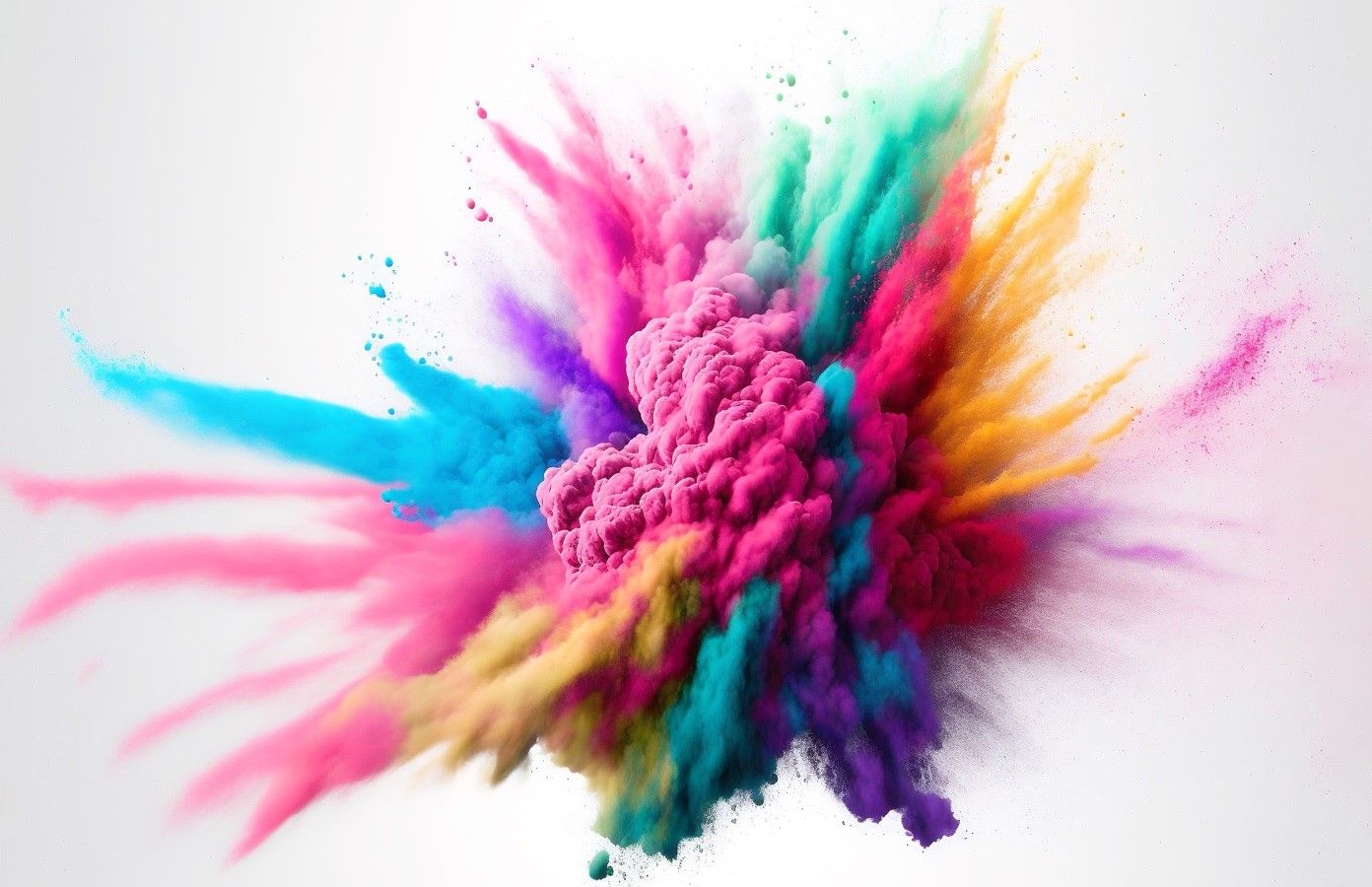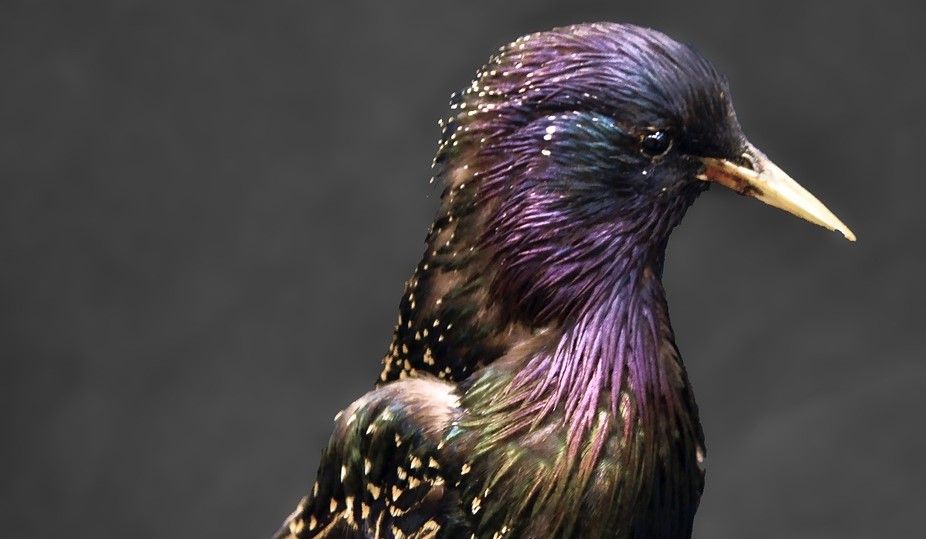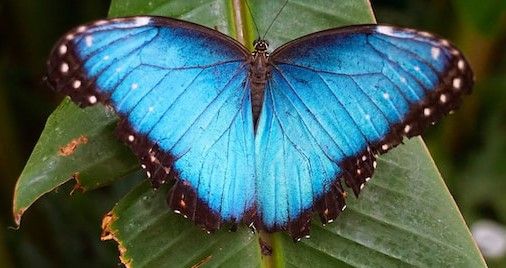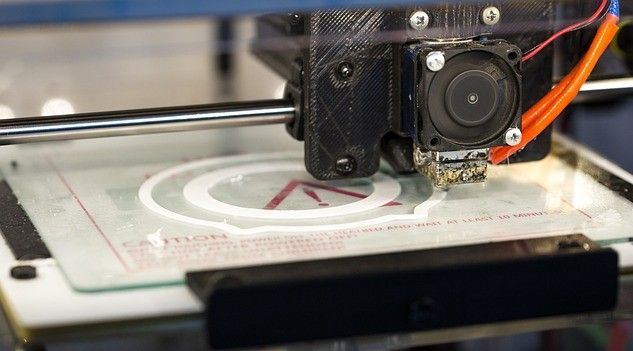Beyond Pigments: Nanotechnology Improves Colouring
Nanostructuring can provide materials with strength, electro/thermal conductivity, UV resistance, and now also cheaper, longer lasting colour.

Colour is a vital but often overlooked part of our world – something we all take for granted.
Yet nanotechnology researchers are now rethinking the way that we apply colour to products. Thinking beyond pigments to use nanostructuring as a way to reduce costs, improve colour range, and reduce fading.
Pigments vs Structuring
Pigments are molecules that absorb certain wavelengths and reflect others. For instance, chlorophyll looks green because it absorbs blue and red light, and reflects green. Carrots and tomatoes gain their distinctive colour because they contain carotenoids which absorb blue light, and reflect red and yellow.

In contrast to pigments, structural colours are created by tiny surface features that selectively reflect or scatter particular light wavelengths.
This can often be seen in nature, with a variety of creatures employing nanostructuring to affect colour, for example peacock feathers, beetle wing cases, opals, and butterfly wings.
Nanotechnology Solutions
Nanotechnology researchers are today able to construct materials from the bottom up. In doing so, they can organise molecules and nanoparticles in specific ways to create desired properties such as added strength, electromagnetism, thermal conductivity, and/or UV resistance.
This technological advance now also includes nanostructural modification to produce a desired colour or optical effect.
For example, scientists from the University of Akron, Northwestern University, and University of Ghent have demonstrated a process to reproduce the structural colours inspired by bird feathers using self-assembling nanoparticles with synthetic melanin.
Computational design has aided this process by employing simulations and optimization algorithms, creating novel nanostructures with specialised optical properties which were conceived in a digital format before fabrication.

As the colours that we see depend on the wavelength of the light, nanomaterial specialists have been analysing how materials reflect and interact with light at the nanoscale. Understanding this allows manufacturers to design ways to change a product’s colour without the use of pigments.
Here are some of the ways that structuring can impact colouring:
Thin-Film Interference
Light waves overlap as they reflect off objects with contrasting refractive indices. Depending on the relationship between these waves, some colours can either be amplified (constructive interference) or nullified (destructive interference).
The thickness and refractive properties of the film impacts the colours produced, this effect can be seen in soap bubbles and oil slicks.

Diffraction
Diffraction is the process by which light waves bend and spread when they come into contact with an obstruction, especially if it has a size similar to the wavelength of the light. How light waves interact with one another after diffraction can result in a variety of colour patterns.
Diffraction gives peacock feathers their colourful sheen. The process can also be seen around shining streetlamps in the fog as the light bends around the obstacle to appear with colour.

Diffraction and Interference Combined
Light waves can be bent, divided, or even forced to overlap when they go through the intricate, nanoscale shapes on a surface. Diffraction frequently precedes interference patterns, when the bent waves interact to either intensify or cancel out certain colours.
Photonic crystals
“Photonic crystals represent a marvel of natural nanotechnology,” explains Michael Berger, the Founder of the online journal Nanowerk. “They are unique structures with a periodic arrangement on the nanoscale, influencing how photons (light particles) move through them. Photonic crystals have photonic band gaps, determining which light wavelengths (colors) can pass and which are reflected.”
This effect can be seen in the wings of some butterfly species.

Multilayering
Some of the effects listed above can also be enhanced through layering. As each nanoparticle strata of a material applies a different process (diffraction, interference, etc) the light is reflected in different ways, enhancing, combining, or absorbing colours.
Understanding these processes is now providing manufacturers with ways different ways to add colour. This can reduce raw material costs and/or provide unique selling points. Such is the versatility of nanotechnology that this know-how can be applied to a range of industrial sectors. These include:
Textiles
Colour has always been central to the fashion and clothing industry. With the smart application of nanotechnology, the multimillion-dollar bill for dyes, bleaches, and stains could be reduced. At the same time, a new range of colours and hues could be used. For example, clothing which changes colour according to the direction of light.
4d Printing
4d printing is the use of 3d printing with materials which are reactive to stimuli. If this technology is combined with the application of nanomaterials, then products could change colour under prescribed circumstances, such as light (removal of light), moisture (removal of moisture), or pressure (removal of pressure).
This nanotechnology development holds great promise for use in flexible electronics, soft robotics, and medical devices/implants.

Anti-Counterfeiting
While anti-counterfeiting devices are a niche market, governments go to great expense to ensure that the coins and banknotes in circulation are not fake. By applying nanomaterials to the inks used in extrusion 3d printing, researchers have been able to develop a humidity-responsive colour changing ink with great potential for fighting counterfeiting.
Displays and Sensors
Electronics manufacturers can learn from nature in how to craft advanced optical devices. Apparatus such as lenses, sensors, or other instruments could be improved in terms of resolution or sensitivity. This could lead to major breakthroughs in microscopy to telecommunications.

Nanotechnology has already provided plenty of benefits for manufacturers.
Nanostructuring can provide a material, such as a polymer, with added desirable properties, but it can now also aid the way that materials are given colour. This can reduce raw material costs as less dye or pigment is needed. It can also provide colours which are slower to fade, are UV resistant, or paints which are less likely to crack. All of which are free of harmful chemicals, such as VOCs.
Nanotechnology can also be a more sustainable way to add colour. Nanomaterials are extremely lightweight, an ideal asset for coatings being used in the aerospace industry.
But above all, nanostructuring has the potential to provide cheaper, longer lasting colour.
Photo credit: Svstudioart on Freepik, Wild0one, RitaE on Pixabay, Freepik, Ippicture, Damon on road on Unsplash, David Holifield, & Raspopova Marina

